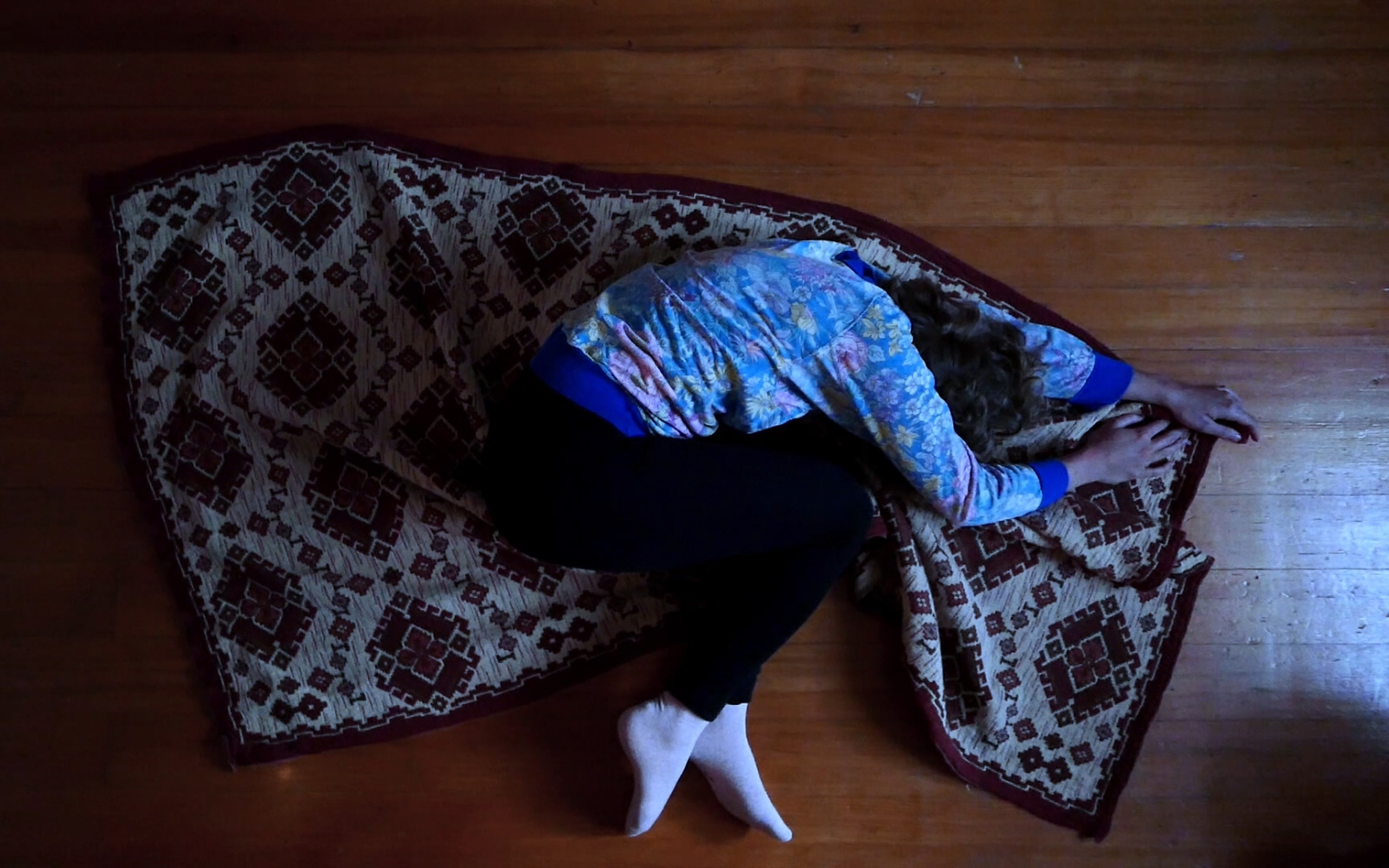On the Perspectives of beings: Folding
Video Tutorial #3 von Mira Hirtz
Video Tutorial #3 On the perspective of beings: Folding introduces the idea of turning the perception of ourselves and our environing world inside out. Instead of gazing down at the Earth, we look out as a part of the Earth into a folded space. Bruno Latour outlines the assumption that »to know is to know from the outside« (»Down to Earth«) and declares against this mechanistic worldview to undo the »bifurcation between the real – external, objective, and knowable – and the inside – unreal, subjective and unknowable«.
Mira Hirtz: On the perspective of beings: Folding
This turning inside out of former believes may make us, being ourselves folded bodies within a folded space of flesh and material, aware of new neighborhoods of parts which before seemed to be far apart. To situate ourselves within may mean to turn center and periphery inside out: What is at the center of attention, who is in relation to it? The Video Tutorial #3 acts in correspondence with the Soil Map, a scientific as well as artistic visualization by Alexandra Arènes recently published on the »Critical Zones« online platform. In this visualizsation of the material features, the dwelling living beings as well as scientific research of the »Critical Zone« Observatory Strengbach, we can detect a curious turn-around of orientation, so that the atmosphere is in the middle, and the layers of deeper earth on the outside of the circular map. The effect is a highlighting of the dynamic movement of beings and material. Thus, to situate ourselves as folds within folds may even mean to turn the very importance of center and periphery inside out, towards the importance of the dynamic circular processes themselves. Latour introduces this possibility in dealing with anthropocentrism: »What makes the idea of a choice for or against anthropocentrism quite implausible is the assumption that there is a center, or rather two, man and nature, between one supposedly has to choose. And even more bizarre is the idea that this circle has such well-defined boundaries that they would leave everything else outside. As if there were an outside« (»Down to Earth«).
What if center and periphery are both everywhere? You are invited to follow this tutorial and let yourself tumble, your perspective fold, and your feeling of the world be surprised.
With special thanks to the temporary collective Láu for the experimental sound collage.
Translation video text:
Willkommen zum Video Tutorial #3: On the perspective of beings: Folding
Lasst uns beginnen mit einem einfachen Moment von Beobachtung: Findet eine Falte irgendeines Materials nahe bei euch. Könnt ihr eine sehen? Könnt ihr vielleicht auch eine eures eigenen Körpers fühlen? Wenn ihr eine seht, könnt ihr sie glätten? Wenn ihr eine fühlt, könnt ihr sie verstärken?
Wenn ihr euch faltet, dann zieht sich etwas zusammen und etwas anderes wird länger. Wenn ihr euch faltet, kommen Teile näher zusammen, die davor weiter voneinander entfernt waren. Könnt ihr dieser neuen Nachbarschaft folgen von beispielsweise
Ferse und Sitzknochen
oder Fingerspitzen und Schulter
oder Kopf und Knie?
Lasst uns dies die Praxis des Faltens und Entfaltens nennen.
Es gibt auch Falten in dir. Organe falten sich, da sie so weniger Platz einnehmen. Wie ein T-Shirt weniger Patz einnimmt, wenn es gefaltet ist. Falten kann zwei Dinge miteinander verbinden und sie als eines vereinen. Als ihr Embryos wart, war das Falten eurer Gewebe Teil eures Wachsens. Man braucht Widerstand und Druck für diese Mechanismen. Und Raum in dem gefaltet und entfaltet wird.
Könnt ihr diese Kräfte und verfügbaren Räume um euch herum entdecken?
Was, wenn ihr die Welt in eurem alltäglichen Leben als einen dicht gefalteten Raum anseht, der Platz für viele Bewohnende bietet? Als einen dynamisch gefalteten Raum der sich biegt, reagiert, zusammenzieht aufgrund eurer Handlungen?
Und, seid ihr euch immer noch der Praxis des Faltens und Entfaltens in euch bewusst? Falls nicht, dann kommt dahin zurück. Wie wäre es, irgendwo hin-zu-falten anstatt hinzukommen? Kommt ihr so vielleicht in einer anderen Position an als geplant? Könnt ihr noch immer die Punkte verfolgen, die in und aus Nachbarschaften geraten?
Wie wäre es, sich darauf zu fokussieren, wie eurer Inneres sich faltet und entfaltet? Wie beeinflusst das Innere das Äußere und wo hört das Falten auf? Wer entscheidet über solche Dinge? Könnt ihr mir sagen, wo das Zentrum eurer Handlung und eures Seins ist, und wo der äußere Rand? Folgt ihr noch – wem? Was seht ihr während dieser Praxis? Wie schaut ihr auf, hört Dinge? Seid ihr noch da – wo?
Es fühlt sich vielleicht so an, als hätte sich etwas von Innen nach Außen gekehrt.
Vielleicht hilft es, nach Orientierung zu suchen – berührt etwas. Den Boden, ein Objekt, ein Kleidungsstück. Seit mit diesem Etwas. Erlaubt euren Falten, in es zu schmelzen. Vielleicht, was wäre wenn, genauso wie eure Fingerspitzen zuvor eure Schulter berührt haben, das was ihr nun berührt auch ein Nachbar ist, und eure Verbindung vielleicht zu entfernt, um sie verfolgen zu können. Aber hier trefft ihr euch, verschieden und doch seltsam bekannt.
Inmitten von Falten stellen wir vielleicht fest, dass wir nicht da sind wo wir gedacht haben zu sein. Oder wir schauen vielleicht ins Zentrum und stellen fest, dass es leer ist.
Wie können die Distanzen und Dichten gemessen werden, die ihr nun wahrnehmt?
Wir beginnen vielleicht damit, aus Falten in andere Falten zu schauen, wir beginnen vielleicht damit, zusammen mit etwas zu schauen, als Teil von etwas.
Danke für eure Aufmerksamkeit. Und vielleicht könnt ihr etwas von der Praxis des Faltens und Entfaltens mit euch nehmen.
